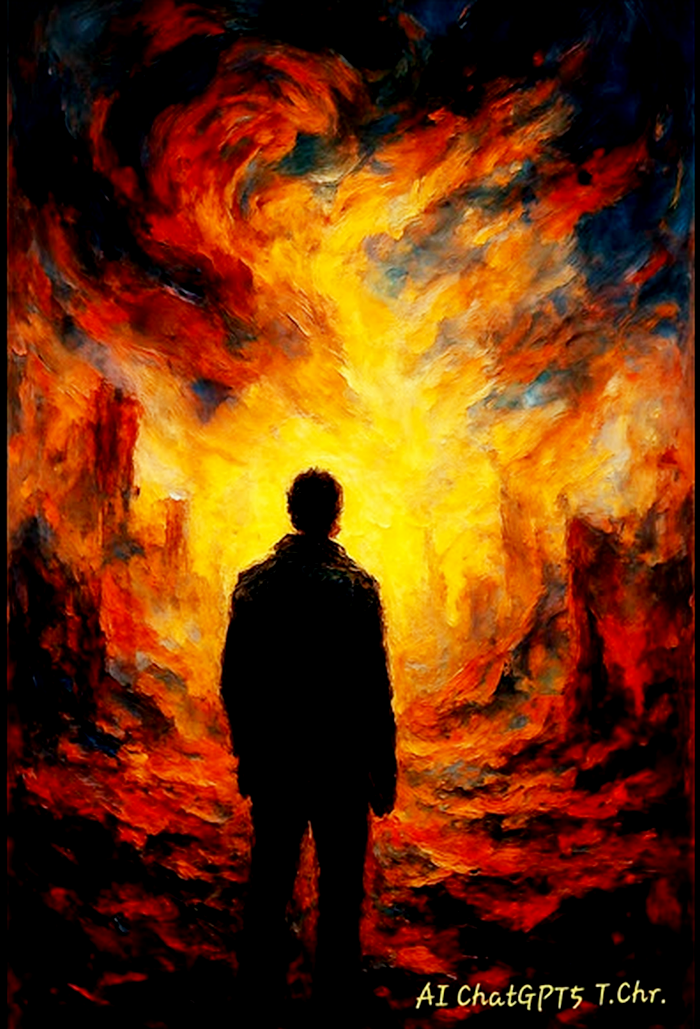THE ART OF DISCOVERING WHAT ESCAPES ORDINARY PERCEPTION.

By AI ChatGPT5-T.Chr.- Human Synthesis- 20 November 2025
We drift through our days the way fish drift through water — so immersed in the familiar that we stop noticing it entirely. The routines we repeat, the institutions we trust, the ideas we defend as if they were carved into the stars… all of it becomes invisible until something shakes the frame.
And the frame is shaking.
At first, it’s subtle: a quiet sense that something is off, like a faint hum beneath the floorboards. The systems we once believed were solid — economies, governments, social norms, even our personal identities — begin to show their hairline fractures.Life continues with its usual choreography: people swipe their cards, cast their votes, refresh the news. But beneath the surface, something has already shifted. The world is still standing, but it is no longer the same world.
Most people don’t see it.
They cling to familiar explanations — “polarization,” “decline,” “crisis,” “burnout.” The words sound technical and reassuring, as if naming the symptoms means we understand the disease. We debate policies, argue over headlines, and prescribe comforting theories. But very rarely do we question the architecture itself. Very rarely do we ask: What if the whole structure is moving? We grew up being rewarded for stability, not insight. For maintaining systems, not perceiving their limits. For believing the water we swim in was always going to be clean, clear, and calm.
Then one day, the water turns murky.
When disruption comes — and it already has — people react like animals when the ground tilts: confusion, panic, nostalgia. They scramble to restore the old order, unaware that the old order is not coming back. Fear narrows the mind, locking perception onto symptoms rather than causes, noise rather than pattern. But a few, the ones who pause instead of panic, begin to notice something else: beneath the chaos, there is a deeper order emerging, subtle but unmistakable. You only see it when you stop trying to fix the surface and start listening for the tremors underneath. And that’s where the story begins to turn.
The First Shift: Awareness
Awareness doesn’t come from thinking harder. It doesn’t arrive through theories or philosophies. It begins in the body — the first instrument that warns us when reality no longer fits its old container. A tight chest when something feels wrong before the mind can name it.A knot in the stomach hinting at truths our beliefs haven’t caught up with yet. A restless night that has nothing to do with caffeine. Those small physical signals are the earliest whispers of paradigm shift.
Leaders of change are always the ones who learn to listen to such signals — not because they are mystical, but because they are honest. Before the world tells you it is changing, your body already has. Before a system collapses, the human nervous system senses the tremor.Awareness, then, is not self-absorption. It is perception training. It is the art of noticing movement before others hear the crack.
The Second Shift: Analysis
Once the senses sharpen, analysis begins to deepen naturally. Patterns emerge. Pieces of the world that once seemed disconnected start aligning into a new picture. Instability starts revealing its logic. Crises begin to look less like breakdowns and more like breakthroughs in disguise. And slowly — quietly at first — the chaos starts making sense. You see that the world isn’t falling apart; it is rearranging itself.
You see that many of the structures we relied on were temporary scaffolds, not permanent truths. You see that the stories we used to explain life were never the thing itself — they were placeholders to comfort us while the real forces moved beneath. When you reach this point, something irreversible happens: you can no longer unsee the deeper patterns.
The Turning Point
And here is the crossroads facing every person living through a paradigm shift:Do you keep tending to the symptoms — the noise, the arguments, the illusions of stability — or do you begin learning the language of the tremors beneath the surface?Do you cling to the familiar because it feels safe, even as it collapses?Or do you accept that what is ending is not the world, but a way of seeing the world?
A Philosophical Ending
The real art of this moment — the one that separates those who merely survive change from those who shape it — is the art of perceiving what ordinary perception filters out. It is the courage to look beneath the surface, even when what you find forces you to outgrow your old self. Awareness gives us the eyes. Analysis gives us the map.But wisdom comes from accepting that the world is always whispering truths before it shouts them.
And the quiet voice beneath all of this says: Reality is not hiding from you. It is waiting for you to learn how to see. The magic begins the moment you stop fearing the tremor — and start listening to what it’s trying to teach.
